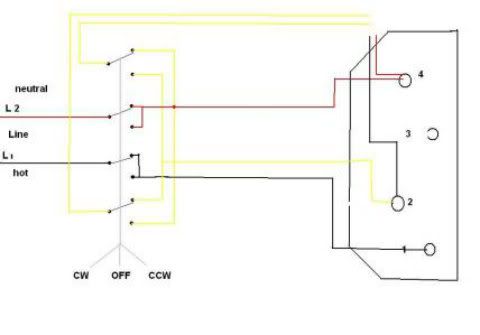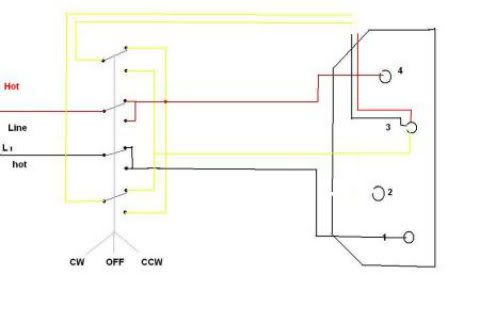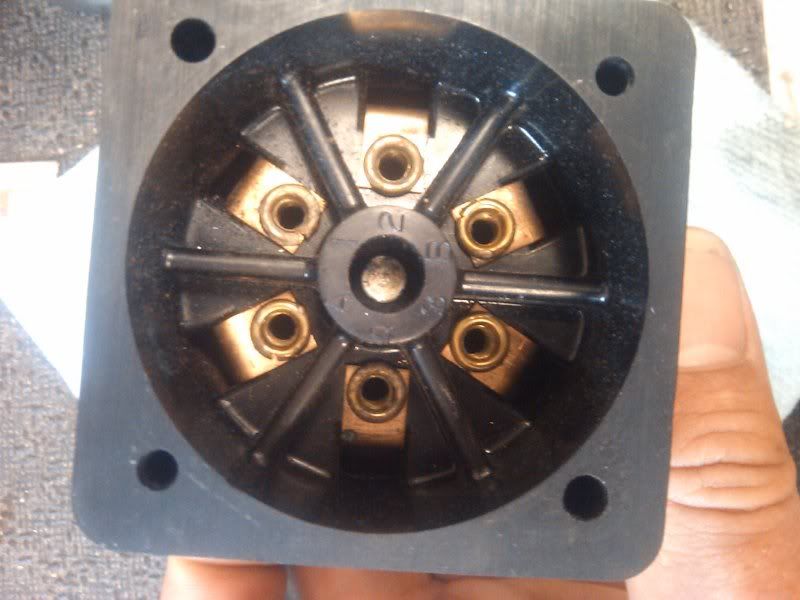What I gather so far...Correct, I wish to reverse the motor via the reversing switch that was mounted to the machine, wires all in disarray. The lower half of my drawing represents the switch positions, the lines between the circles represent continuity between connectors, and the letters are exactly as written on the actual switch. I understand the yellow wires at the motor will have go through the switch. And yes, the switch makes no contacts in the off position. I'm not familiar with CCW and CW, but the switch is labeled forward and reverse for it's two running positions, off being the center position.
Motor terminal 1 (will abbreviate as M# hereafter) backside is one end of the overload. The other end of the overload is M2 backside. Also backside, one end of main winding 1 is connected to M2, while the other end is the Red lead. One end of main winding 2 is connected backside of M4, while the other end is the Black lead. M3 has no backside connections.
Yellow leads are lifted and must be connected to switch terminals 2 and 4 (S# hereafter). Their complements going back to the motor connect to Sa or S1 and Sb or S3, then to M2 and M4 respectively.
As the overload is assumed to be between M1 and M2 and M2 is also connected to one end of one main winding, I can't think of way to swap yellows and also disconnect both lines right now... so let's say Neutral line is connected to M1. The Hot line could connect to Sa, Sb, S1, or S3, whichever is the mate for the complement wire connected to M4. That is, for example, if the complement wire connected to M4 is connected to Sa, then connect Hot to S1.
Thoughts?
Last edited:




